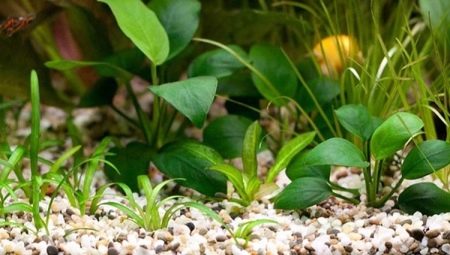So, you decided to equip the aquarium and buy fish. One of the most important components of an artificial ecosystem, which is an aquarium, is the soil. If it is chosen incorrectly, then the water will deteriorate quickly, and fish and algae will hurt and die. In our material you will find the necessary recommendations for choosing the type of soil, its preparation and laying, as well as further care for it.

Primary requirements
Consider the basic requirements which should be presented to the ground before buying it.
- It must have a porous structure. This is necessary so that air circulates between the soil particles, thereby creating a favorable living environment for microorganisms. These microorganisms are able to process residual feed and fish waste. In this case, putrefactive processes do not occur, harmful microorganisms do not develop, and the water remains clean longer.
- Ideal is a substrate with a particle size of 2 to 5 mm. If the particles are larger, then it will be difficult for the fish to get food from under it. Soil, consisting of small particles, may caking, decay processes will begin. As a result, this can lead to the death of fish and plants.
- The particles should be rounded, without sharpening. On sharp corners, fish can be injured. In addition, acute-angled particles have the ability to coalesce.
- Particles of the substrate should be approximately the same. If you mix small pebbles with sand, then stagnation processes cannot be avoided.
- Soil particles should be quite heavyso that they hold plants well and it is convenient to siphon it.
- The substrate should not emit any substances., initiate or provoke any chemical reactions in the aquarium.
- The ideal option is if the soil allows you to maintain the required pHIt is also saturated with plant nutrients.
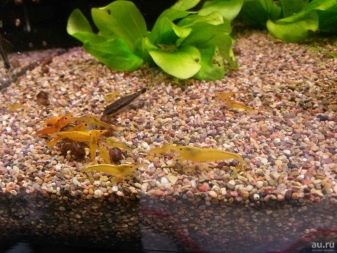
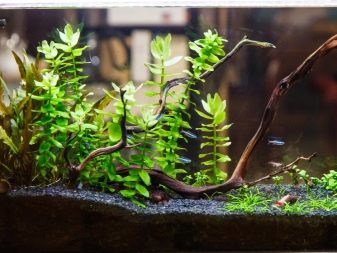
Varieties
All types of soil can divided into 3 large groups.
- Natural. Such a substrate consists of natural materials that have not undergone any processing. Plants from it cannot receive any nutrients, therefore additional fertilizer is required. If such a substrate lay in the aquarium for more than six months, then a nutrient medium appears at the bottom and fertilizers are no longer required. This type of soil includes sand, pebbles, quartz, gravel and gravel.
- Mechanical. This group includes substrates, also consisting of natural materials, however, which have undergone mechanical processing.
- Artificial. This substrate is divided into two groups. The first is decorative plastic and glass primer. The second group includes nutrient soil. It is used in Dutch aquariums, in which they do not breed fish, but only plant plants.
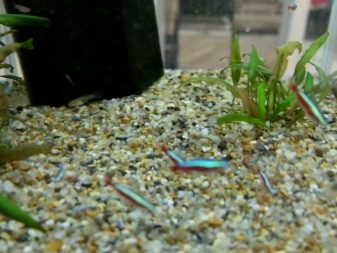
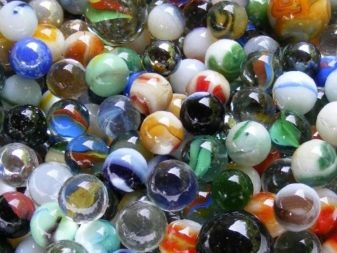
So, consider the most popular types of soil.
- Sand. There are some types of fish for which sand is the ideal substrate. In it, the inhabitants of the aquarium make minks, spawn, and even with its help establish the digestive system. Sand is also good for plants, as it allows the roots to catch well. All contaminants, as a rule, remain on the surface, so it is easy to clean. Sand for the aquarium can be marine, river, quartz, white argonite, black, live.
- Pebbles. It is a fairly common substrate. Both sea pebbles and those found along the river bank can be used. Beautiful, safe ground. Particle size can be selected depending on the design of the aquarium.
- Nutritious soil. In pet stores special soil is sold, which is a mixture of peat, mineral fertilizers, bacteria and porous material. Especially this substrate is good for aquarium plants.
- Black soil. It is very popular among aquarists, because against its background colored fish look so beautiful. A substrate of basalt, granite, schungite is used. However, this soil can give the water an ugly gray tint. An exception is quartz; it does not pollute water. In addition, one should not forget about the magnetic properties of such a substrate, which are harmful to both fish and plants. It is a neutral soil and requires additional fertilizer.
- White soil. Most often it is limestone or marble. Makes water harder, which is not suitable for all fish species. In addition, it acquires a brownish or greenish tint over time, which does not add aesthetics to your aquarium.
- Colored soil. It is mainly made of glass and plastic. May be ceramic. Performs only a decorative role, does not carry any useful properties.
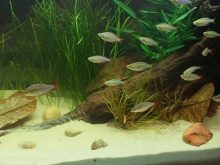
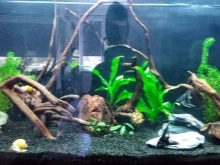
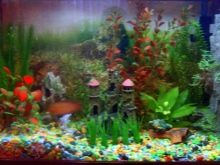
Some novice aquarists try to use the ground as a substrate. It is absolutely impossible to do this. It will cause processes of decay, water will be infected with harmful microorganisms, and all fish and plants will die. It is worth giving preference to one of the types of substrate considered above.
Rating of the best
Consider the main substrates that are most often found in the store.
"Floraton"
Another name for it is Dutch soil for an aquarium. The particles have a spherical shape with a size of about 1.5-1.7 mm. Due to the absence of sharp corners, this soil is well suited for aquariums where bottom fish live. Besides, the form of the substrate provides good water permeability, does not allow it to stagnate, provides living conditions for microorganismsthat recycle fish waste. This soil can be called a biofilter. Its brown color harmonizes well with algae. The price for 3.3 liters ranges from 800 to 1000 rubles.
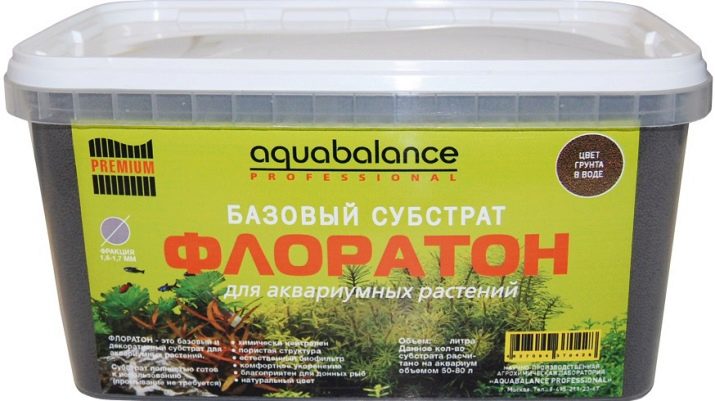
Jbl manado
It is made of expanded clay - burnt clay. The particles have a size of 0.5-2 mm. The substrate also has no sharp edges, is safe for fish and plants. He has the ability to absorb surplus fertilizers, and with a shortage to give them back. The root system of algae grows well in such a soil. Since the substrate is made of clay, it is lightweight. If you live in the aquarium fish - lovers to delve into the ground, then plants should be planted deeper. In addition, it is difficult to make a raised bottom with such a substrate, since it is mobile. Easy to clean. On average, the cost per 5 kg is about 850 rubles.
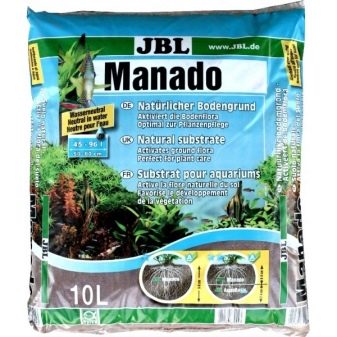
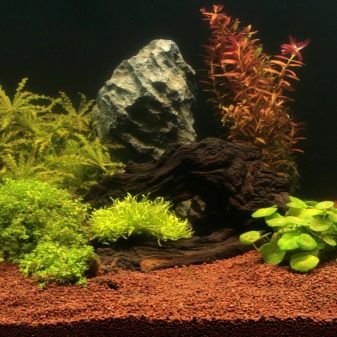
UDeco, natural white gravel
The name speaks for itself. This is white river gravel. It is safe for fish, as it has a natural origin. The particle size is from 3 to 5 mm. This substrate retains white color even after a long time. It slightly increases the hardness of the water, but if your pets are cichlids, then it will benefit them. Such a substrate is practically not susceptible to siltation. The average cost for 3.2 kg is 123 rubles.
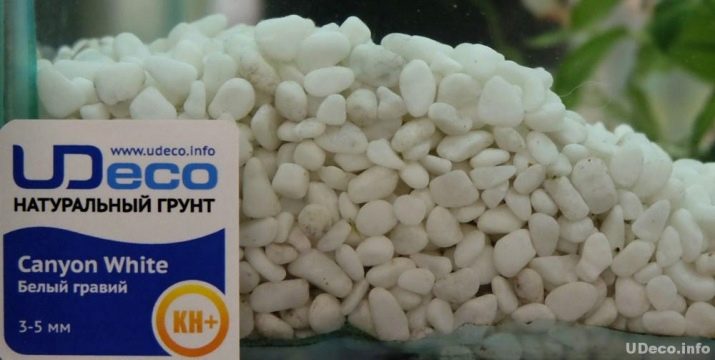
Barbus Mix
This type of soil is made of marble chips. Such a substrate may be white, black and color. The size of the particles is also diverse. Both small (2–5 mm each) and larger ones, from 5 to 10 mm, are commercially available. In this regard, it will look good both at the bottom of a small and a large aquarium. Besides, variety of colors allows you to create your own design. However, particles may fade over time. This substrate slightly increases the hardness of the water, but is generally safe for fish and plants. The price per 1 kg is about 65 rubles.
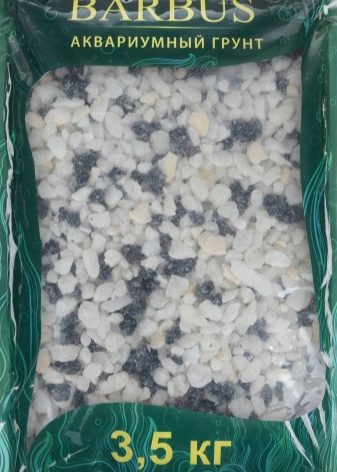
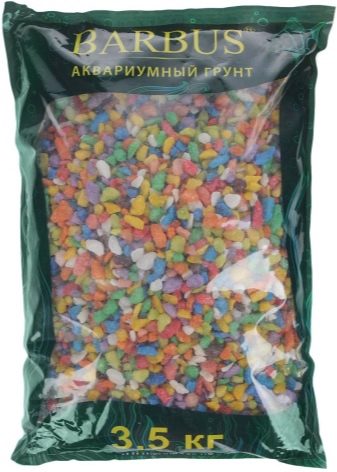
Power sand special m
This type of soil is ideal for an aquarium with lots of algae. Such a substrate consists of a mixture of peat, porous material, beneficial microorganisms and mineral fertilizers. Particles of soil are of the following sizes - S, M, L. When choosing, you need to proceed from the size and depth of the aquarium. On top of this substrate it is necessary to put a layer of basic soil. On the same day when you put the substrate in the aquarium, you can’t populate the fish. They may die due to nitrogen emissions. You should wait until the water composition becomes stable. The price for 6 kg of such soil is about 4000 rubles.
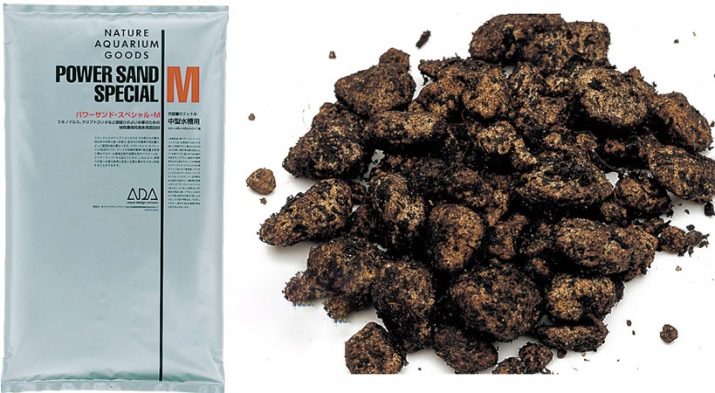
Deponit mix
This soil is a mixture of quartz sand, clay, peat, mineral fertilizers. It is used together with the main soil and serves as a substrate. Well suited for all types of fish and plants. However, if you decide to use this substrate, then you should immediately plant the aquarium with vegetation, otherwise the bacteria contained in this soil will cause a rapid growth of algae. Some aquarists note that this substrate can sometimes sour. The cost for 4.8 kg is about 1600 rubles.
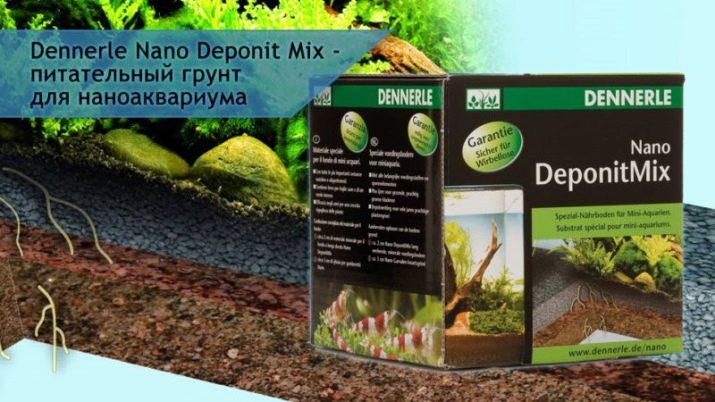
Udeco Sea Coral
Made from coral chips. The particle size is 11-30 mm. It is able to increase the hardness of water, so it is well suited for cichlids. A beautiful substrate that can serve as a decoration for an aquarium. The average price for 6 kg is 650 rubles.
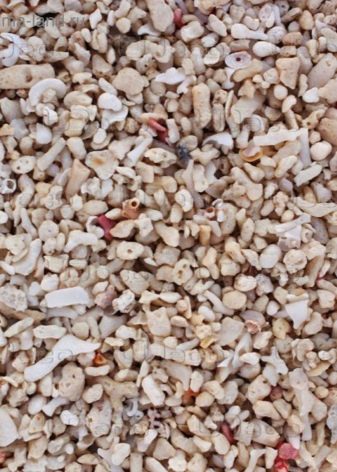
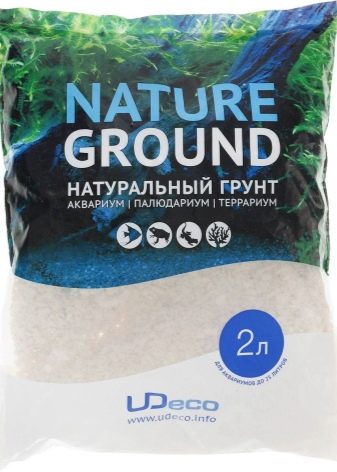
ECO soil
The raw material is marble chips. On sale you can find such a substrate of various colors and sizes. The main role in the aquarium is decorative. To a small extent increases the level of water hardness. The cost of 3.5 kg is 170 rubles.
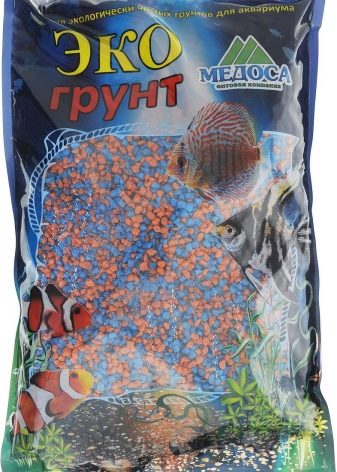
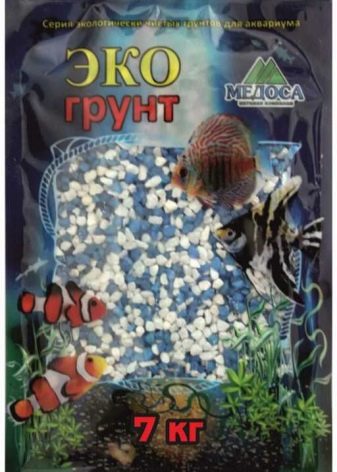
How to choose?
When choosing the soil for your aquarium, you should proceed from the following criteria.
Type and size of fish
The smaller the fish, the finer the soil suitable for it. However, do not forget about the features of some fish to swallow particles of the substrate. If you have such pets, then it is worth acquiring larger soil, otherwise it will lead to the death of individuals. If your fish like to dig into the substrate, it is better to choose sand. The color scheme of the soil is not so important, however, most fish look better against a dark background. A white substrate can change color to brown or even greenish over time.
When choosing a multi-colored, colored or decorative glass substrate, try not to overdo it so that attention is not distracted from the fish.

Plant species
For them, the soil should be primarily nutritious, and the root system should be something to catch on. Most plants are small or medium sized particles. Soil of natural origin is preferable.

How to calculate the right amount?
The substrate layer should not be too thin, otherwise it will cease to fulfill its role. The optimum layer thickness is from 2 to 10 cm. If you have an aquarium without plants or plants do not need rooting, then 2 cm will be enough. If your plants have a small root system, then they need 3-5 cm of soil. When growing large plants with a large root system, 5 to 10 cm of substrate may be required.
To calculate in kilograms, you can use the special formula m = 1000p * n * V: C,
- where m is the mass of soil;
- p is the specific gravity;
- V is the volume;
- n is the height of the soil;
- C is the height of the aquarium.
This is a universal formula that allows you to determine how many kilograms of soil you need in a small aquarium, for example, with a volume of 20 liters, and in aquariums of 100 liters and even 200 liters.
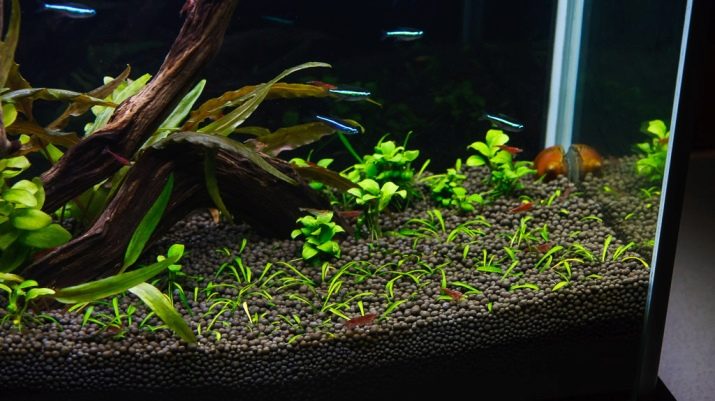
The specific gravity table can be found on the Internet. However, if you are afraid to make a mistake, you can use the online calculator to calculate the amount of soil in the aquarium.
Preparation
So, you have chosen the soil, calculated the required amount and purchased it. Before filling the substrate into the aquarium, it must be prepared.
Preparation consists of several stages.
- Flushing. Rinse the soil in a plastic bucket in small portions until the water becomes clear. If you decide to save time and start flushing all the soil at once, then you risk doing so poorly.
- Disinfection. After you have washed the soil, it should be disinfected so as not to bring the larvae and harmful bacteria into your aquarium. Disinfection is done by boiling. Boil for 15 minutes, then rinse with warm water. After that, the soil is calcined in the oven for about 30 minutes at a temperature of 100 degrees. If the soil is plastic, then it must not be exposed to such high temperatures. Rinse it with water and then disinfect in a 10% chlorine solution. After the soil has stood for 2 hours in a chlorine solution, it is washed until a specific odor is eliminated. A soil containing a large amount of marble, carbonate, is placed in a bowl with a 30% solution of citric acid and stirred until air bubbles no longer appear on the surface. This procedure allows you to free the substrate from magnesium and calcium.
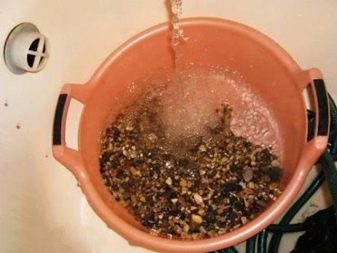
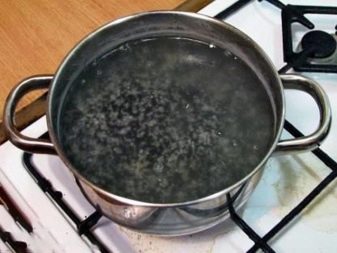
How to stack?
In order to lay the soil, it is best to use a spatula. It can be purchased at the store, or you can make it yourself from a plastic bottle. Soil is placed in an aquarium without water. Pour it, placing the scapula as close to the bottom of the aquarium as possible, otherwise you can damage the walls.
The layer thickness at the front wall should be less than at the back. Usually, in front of the soil is laid in a thickness of 2 cm, and to the opposite reaches 8 cm.
In order to level the soil, give shape, use a wooden spatula.
If you plan to plant the aquarium with plants, then a nutrient substrate should be made for them. Its thickness should not exceed 1 cm. After that, the main soil is laid out.
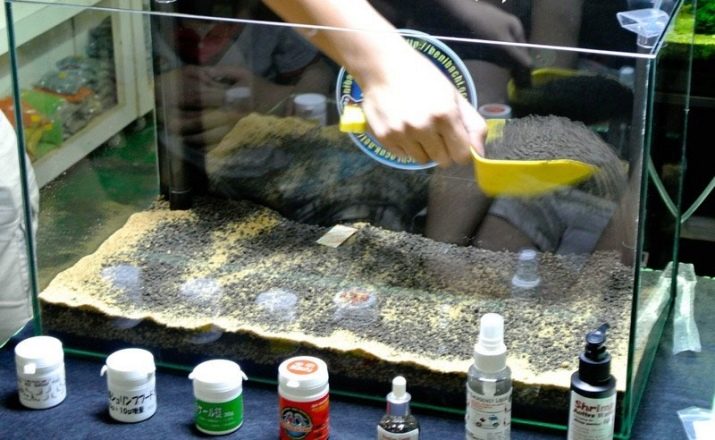
How to care?
If the soil is laid correctly, then care for it will not cause problems. It is enough to clean it as necessary. Complete soil replacement is done every 5 years.
It is very convenient and easy to clean the soil with a siphon. It is enough to hold them above the bottom of the aquarium, and it will absorb all the waste. Without a siphon, the bottom can be cleaned using an electric pump.
If you want to change the soil without draining the water, first carefully remove the plants. Then remove the old soil.After that, you can put a new one.
Those who bought an aquarium for the first time often face a problem - the water turns green. This may be due to excessive lighting, excessive feeding of fish. Catfish and snails help to cope with such a problem well. You can also recommend darkening the aquarium.
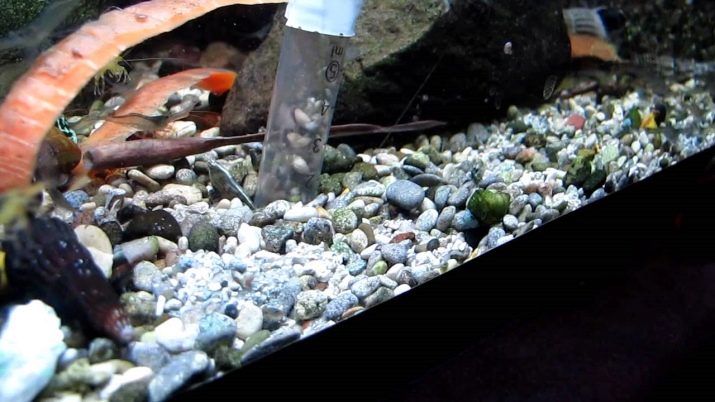
On how to choose the soil for the aquarium, see the next video.
